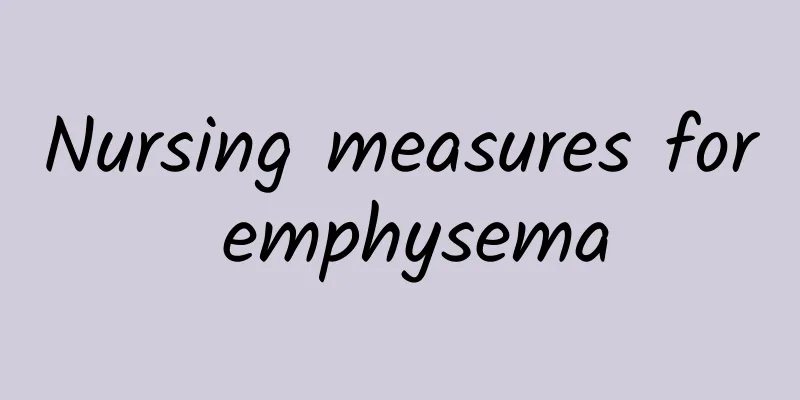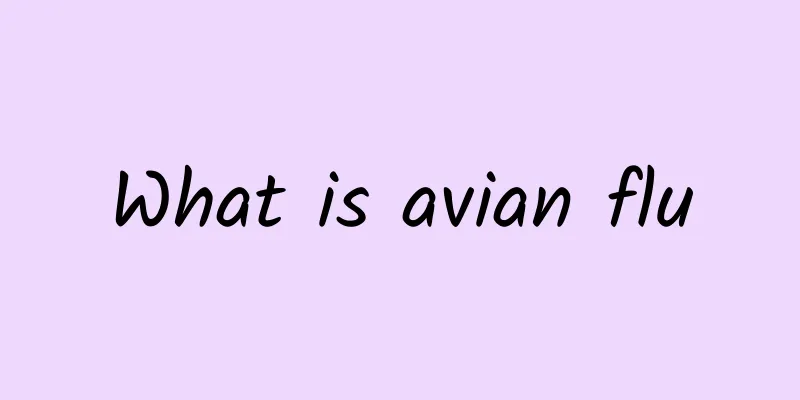Nursing measures for emphysema

|
Emphysema is a type of lung disease, which is mainly related to the lungs and affects people's breathing. Therefore, a good breathing environment is very important. For patients, it is best to have oxygen cylinders with them so that they can perform emergency operations at any time if the condition worsens. Otherwise, they are often helpless when an attack occurs, so it is best to supplement oxygen as much as possible in the case of hypoxia. Regardless of whether you understand the disease of emphysema or not, we should all learn this knowledge from now on, so that once we encounter this situation, we will not be helpless and powerless. This article will introduce you to the care measures for patients with emphysema. 1. Health Education and Disease Awareness COPD is a preventable and treatable disease characterized by airflow limitation that is not fully reversible, is progressive, and is related to the lungs' abnormal inflammatory response to noxious gases or particles, such as cigarette smoke. COPD primarily affects the lungs, but can also cause systemic (or extrapulmonary) adverse effects. 2. Avoid environmental pollution Avoid various pathogenic factors, especially smoking, environmental pollution, colds, etc., avoid inhalation of dust and irritating gases; pay attention to keeping warm, change unhealthy lifestyles, and improve living environment if conditions permit. 3. Drug treatment 1. Bronchodilators: Compared with oral drugs, inhaled agents have fewer adverse reactions, so inhaled treatment is often the first choice. 2. Glucocorticoids: This treatment can reduce the frequency of acute exacerbations and improve the quality of life. The combination of inhaled corticosteroids and β2-receptor agonists is more effective than either alone. Long-term oral corticosteroid therapy is not recommended for patients with COPD. 3. Other drugs: (1) Expectorants (mucolytics) (2) Antioxidants (3) Immunomodulators (4) Vaccines (5) Traditional Chinese medicine treatment. 4. Long-term home oxygen therapy Long-term home oxygen therapy is very important for people who are suffering from hypoxia. If you are suffering from hypoxia, you need to supplement oxygen. You need to supplement oxygen according to the time period of hypoxia. If the blood oxygen saturation is lower than 90%, long-term home oxygen therapy is required. If it is lower than 91-95%, long-term home oxygen therapy is best. Long-term home oxygen therapy generally involves inhaling oxygen through a nasal cannula with a flow rate of 1.0 to 2.0 L/min (follow doctor's advice), the duration of oxygen inhalation covers the hypoxia period, and oxygen inhalation is necessary during sleep. Long-term home oxygen therapy should use an oxygen therapy oxygen machine, not an ordinary oxygen machine. 5. Ventilator therapy When there is CO2 retention, high carbon dioxide partial pressure or respiratory support is needed to improve respiratory distress and reduce cardiac load, or there is sleep apnea syndrome (snoring), a bi-level non-invasive ventilator with backup frequency can be used to reduce carbon dioxide partial pressure. If only sleep apnea syndrome (snoring) is present, oxygen inhalation alone cannot improve the problem of hypoxia during sleep. In this case, a single-level ventilator can be used to solve the problem of breath holding and hypoxia, thereby controlling and stabilizing the condition. 6. Rehabilitation Rehabilitation therapy can improve the mobility and quality of life of patients with progressive airflow limitation, severe dyspnea and little activity. It is an important treatment measure for COPD patients. It includes respiratory physiology therapy, muscle training, nutritional support, psychotherapy and education and other measures. Respiratory physiology treatment includes helping patients cough and exhale forcefully to promote clearance of secretions; relaxing patients, performing pursed lip breathing, and avoiding rapid shallow breathing to help overcome acute dyspnea. In terms of muscle training, there are whole-body exercise and respiratory muscle training. The former includes walking, climbing stairs, riding a bicycle, etc., and the latter includes abdominal breathing exercises, etc. In terms of nutritional support, it should be required to achieve an ideal weight; at the same time, avoid a high-carbohydrate diet and excessive calorie intake to prevent excessive carbon dioxide production. 7. Regular hospital check-ups For patients with emphysema, the sooner they can recover, the better, because sudden lack of oxygen is not pleasant. Just imagine how uncomfortable it would be if your eyes suddenly go black. If a person with emphysema is being treated at home, it is best to have someone to look after them and have regular checkups. |
>>: What causes wind-heat cold?
Recommend
What are the treatments for gangrene?
Gangrene is a serious skin ulcer-like disease. Th...
The role of wheat germ oil soft capsules
I believe everyone should be familiar with wheat,...
Do I need to apply toner before applying aloe vera gel?
Aloe vera gel is a skin care product made from ex...
Good prescription for treating damp-heat in traditional Chinese medicine
Dampness and heat are what we often call evil dam...
What to do with small intestinal hernia? An old Chinese doctor recommends several folk remedies
Hernia refers to a condition in which the content...
What are the effects and functions of Huanghuali
China has always attached great importance to the...
Can vitamin E be used on eyelashes?
The love of beauty is human nature, and a pair of...
Can uneaten watermelon be put in the refrigerator?
Watermelon is popular with many people in summer....
Side Effects of Peppermint
I believe everyone knows mint. Mint can be eaten ...
The efficacy, effects and consumption methods of chrysanthemum tea
As the name suggests, chrysanthemum tea is tea ma...
High ferritin and normal liver function
High ferritin is generally caused by iron deficie...
Which part should be moxibustioned for lumbar muscle strain
If a person's back muscles are in a tense sta...
Principles of TCM treatment of macular hole
In traditional Chinese medicine, the treatment pr...
Treatment of endocrine disorders with traditional Chinese medicine prescriptions
Endocrine disorders are a common disease among fe...
When encountering a woman with sexual indifference, this is what a Chinese medicine doctor does
Sex is a catalyst for the relationship between hu...









